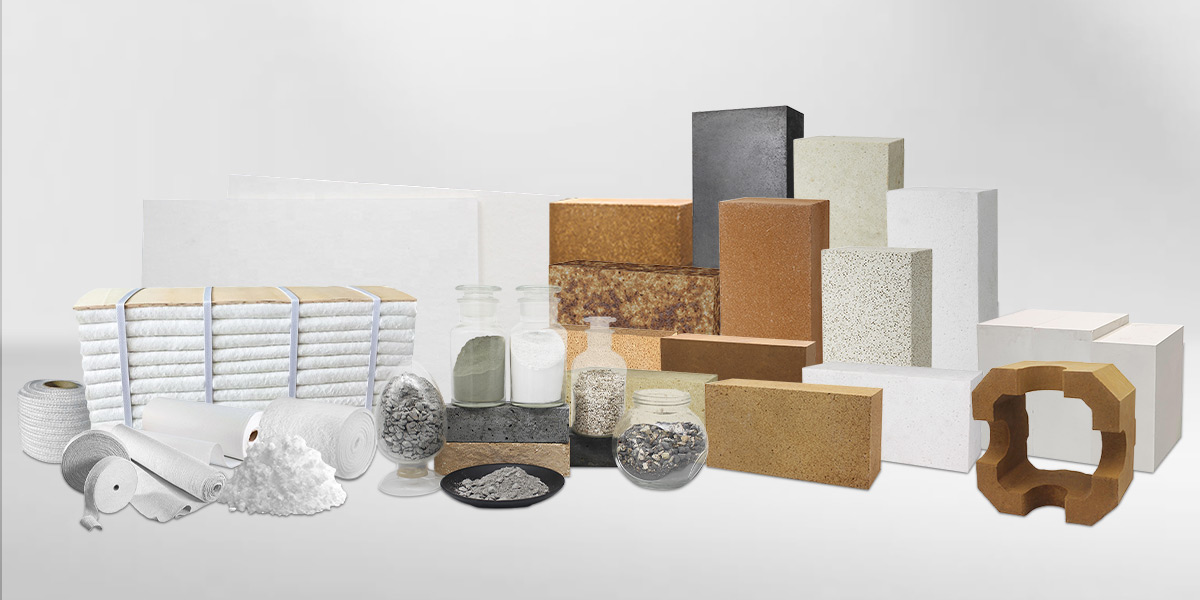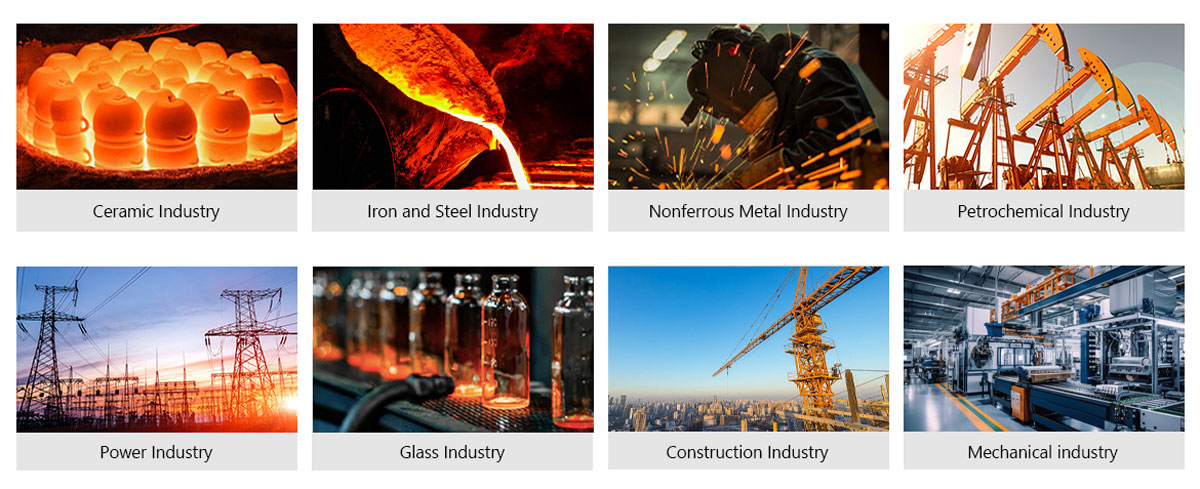Refractory materials have a high refractoriness. Usually, its refractoriness is at 1500 degrees Celsius, even up to 2000 degrees Celsius and above. It includes natural materials and processed materials. Processed materials are made from natural non-metallic materials and various additives by process. These refractory materials can be used in a variety of high-temperature applications.

Categories of Refractory Materials
Refractory is derived from the Latin refractus. In the seventeenth century, it was used to refer to materials that were resistant to heat. Refractory materials are classified in many ways.
Among them, the most commonly used are classified according to chemical elements, chemical composition, shape, and production process.
- Raw materials: Silica, quartz sand, dolomite, diatomite, bauxite, bauxite, magnesite, graphite, chromium ore, zircon, spinel, cristobalite, tridymite, etc.
- Chemical composition: Refractory materials are classified by their major chemical elements, such as silica (Si), alumina (Al), magnesia (Mg), calcium (Ca), boria (B), chromium (Cr), and zirconia (Zr).
- Chemical nature: Refractory materials are classified into three categories based on their chemical nature: acidic (silicon, zirconium, etc.), alkaline (magnesite, dolomite, etc.), and natural refractory materials (carbon graphite, chromium, aluminum, etc.).
- Shape: Refractory materials are classified into two main categories: shaped refractory materials (refractory bricks, insulation bricks) and unshaped refractory materials (refractory cement, refractory castables, ramming mass, etc.).
- Manufacturing process: Refractory materials are classified based on the manufacturing processes involved in their production, such as pressing, sintering, melting, and mixing.
- Thermal conductivity: Refractory materials are classified based on their thermal conductivity, which can be conductive, non-conductive, or insulating.
Application of Refractory Materials
Refractory materials are usually used in the steel industry, non-ferrous metal smelting industry, building materials industry, petroleum industry, electric power industry, light industry, food processing industry, fire protection industry, etc.
They are the foundation upon which these industries are built. They can provide fire protection, heat preservation, anti-corrosion, and insulation functions for these media. More importantly, they can protect the interior from other high-temperature solutions and media, such as glass solution, molten steel, aluminum solution, etc.
- High-temperature kiln: Blast furnace, converter, open hearth, regenerator, crucible (pot) furnace, hot blast furnace, induction furnace, electric arc furnace, ladle furnace, biofuel boiler, coke oven, reverberatory furnace, rotary kiln, iron mixing furnace, refining furnaces, heating furnaces, soaking furnaces, annealing furnaces, sintering furnaces, reactors, incinerators, etc.
- Parts parts: Threading duct, steel barrel, plug, sliding nozzle, tapping trough, etc.
- Fire protection parts: Fire doors, fire walls, fire escapes, fire suits, fire trucks, etc.
- Building parts: Walls, floors, stoves, fireplaces, chimneys, flues, roofs, floors, etc.

Kerui Refractory: Your Partner in High-Temperature Solutions
Refractory materials exhibit a diverse range of properties, including varying melting points, corrosion resistance, mechanical strength, and thermal conductivity. These properties make them essential for a wide spectrum of industrial applications. When selecting the appropriate monolithic refractory linings and other materials for high-temperature applications, Kerui Refractory is your trusted partner in providing comprehensive high-temperature solutions!



